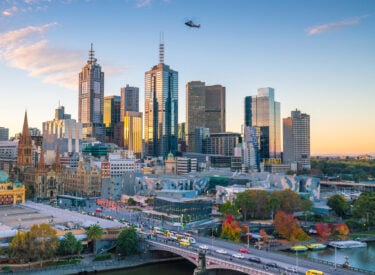
Key takeaways
The RBA has pulled off a rare feat: inflation in the 2-3% band while keeping unemployment at 4.1%.
Governor Michele Bullock called it a "remarkable" achievement, and she’s right—it’s far better than many expected post-pandemic.
The primary force behind low unemployment isn’t private sector strength, but massive growth in public sector employment, especially in healthcare, education, and administration.
95% of jobs growth (in hours worked) came from the non-market sector over the past two years.
Without that public demand, unemployment might be closer to 5.25% today.
Public demand has risen from 22% to 27% of GDP, a structural shift that makes interest rate changes less effective.
Unlike the private sector, health and government services don’t react much to rate hikes or cuts.
The RBA’s main lever—interest rates—is now a blunter tool, while fiscal policy becomes more influential.
The Reserve Bank of Australia (RBA) may have pulled off something few thought possible—bringing inflation back within the target band while unemployment remains historically low.
But don't be fooled into thinking the hard part is over.
In fact, the real challenges are just beginning, according to analysis by Westpac.

A remarkable (but fragile) success story
RBA Governor Michele Bullock was right when she recently said:
“Australia has done remarkably well. Who would have said two years ago we would be sitting here now with inflation at 2-something and unemployment at 4.1%? Not many people.”
And she’s right.
But while we’ve come a long way from pandemic-era chaos, that remarkable economic equilibrium we’ve struck - stable prices and strong employment - may prove temporary according to Westpac’s economist Jameson Coombs.
He cites the unsung hero of this success story as a massive, and now peaking, expansion in public demand.
The quiet force behind low unemployment
What most commentators overlook is how Australia’s strong labour market has been heavily propped up by the non-market sector—healthcare, education, and public administration.
Over the past two years, a staggering 95% of growth in hours worked came from these areas.
Without this surge in government-driven job creation - particularly in the care economy - unemployment might be a full percentage point higher today, sitting around 5.25%.
In short, public sector expansion masked the weaknesses in private sector employment. But that won’t last, according to the Westpac report
Public demand is forecast to slow, and with that, the RBA will face a much tougher balancing act between managing inflation and supporting employment.
A narrowing path: the RBA’s mandate is about to clash
For the past year, the RBA has had the luxury of focusing on inflation without worrying much about jobs.
That’s about to change.
As public sector job growth slows and the private sector recovery remains tentative, the trade-off between inflation and full employment will become increasingly sharp.
Rather than balancing one objective while the other behaves, the RBA will soon find the two mandates - price stability and full employment - pulling in opposite directions.
This will make monetary policy much harder to calibrate, and it’s coming at a time when that very policy tool is losing its potency.
Monetary policy is losing its bite
Here’s a structural issue most people aren’t talking about: the Australian economy has become less responsive to interest rate movements.
Why? Because over the past decade, public demand has surged from 22% to 27% of GDP - a compositional shift similar in scale to the mining boom.
That’s a $33 billion quarterly swing in real activity.
But public demand - especially in healthcare and government services - is far less sensitive to interest rates than private consumption or business investment.
And the result is that rate hikes and cuts now pack a smaller punch.
This means:
- When the RBA wants to cool inflation with rate hikes, the public sector shrugs.
- When it wants to stimulate growth through cuts, the public sector may not respond quickly enough.
Put simply, the RBA is now working with a blunter tool, and the economy’s responsiveness has shifted in favour of fiscal policy, not monetary policy.
Why inflation hasn’t spiked—yet
You might be wondering: if the government’s been spending like mad, why hasn’t inflation surged?
There are three key reasons:
- Most of the spending has gone into services like aged care and childcare, which are not counted in the Consumer Price Index (CPI).
- Government subsidies (on energy bills, for example) temporarily lowered CPI outcomes, even if inflationary pressure was building behind the scenes.
- Spillovers into inflation have been second-order. Yes, they’ve increased demand and income, but not in a way that’s shown up in headline inflation metrics.
But that’s starting to unwind, according to the Westpac report.
As subsidies roll off and public demand slows, headline inflation may actually tick up, even as the real economy cools.
What happens next?
Westpac suggests we’re entering an economic phase where:
- Public demand starts to drag on GDP growth.
- The private sector, while recovering, remains weak and less job-intensive.
- Inflation remains sticky, partly due to structural factors and subsidy roll-offs.
- The labour market weakens, but not enough to justify aggressive rate cuts without reigniting inflation.
This means the RBA may have to sit on its hands longer than many expect, even as the economy slows and unemployment rises.
In other words, while the economy needs monetary support, inflation won’t give the RBA enough room to act boldly.
That’s the worst-case trade-off.
Implications for property investors
This complex environment has major implications for property investors and market participants:
- Expect less predictability from the RBA. There will be less consensus on rate moves. Don't be surprised by sudden shifts in tone or policy between meetings.
- Private sector-led growth will be patchy, so location and asset selection matter more than ever.
- This interest rate easing cycle may be drawn out and have a more muted effect than past cycles.
So, while inflation is (technically) back in the target range and rate cuts are on the horizon, this isn’t the green light many hope for.
The RBA will have to manage rising unemployment and stubborn inflation with tools that don’t work as well as they used to, meaning the RBA’s job is only going to get harder, and property investors should be prepared for a longer, drawn-out interest rate cycle.














